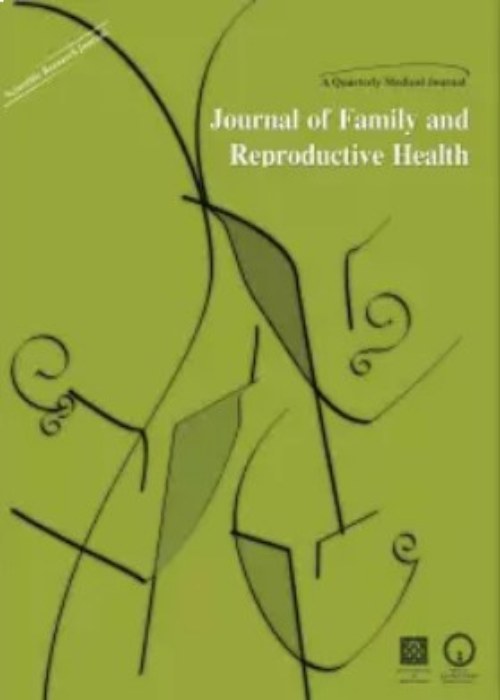فهرست مطالب
Journal of Family and Reproductive Health
Volume:3 Issue: 3, Sep 2009
- تاریخ انتشار: 1389/04/01
- تعداد عناوین: 7
-
Page 69Nowadays stress is an integral part of everyday living and the physiological and behavioral consequences of exposure to stressful situations have been extensively studied for decades. The stress response is a necessary mechanism but disrupts homeostatic process and it is sub served by a complex system located in both the central nervous system (CNS) and the periphery. Stressor-induced activation of the hypothalamus–pituitary–adrenal (HPA) axis and the sympathetic nervous system (SNS) results in a series of neural and endocrine adaptations known as the "stress response" or "stress cascade." The stress cascade is responsible for allowing the body to make the necessary physiological and metabolic changes required to cope with the demands of a homeostatic challenge. Normal activation of the HPA axis is essential for reproduction, growth, metabolic homeostasis, and responses to stress and they are critical for adapting to changes in the external environment. The regulation of gonadal function in men and women is under the control of the HPA. This regulation is complex and sex steroids are important regulators of GnRH and gonadotropin release through classical feedback mechanisms in the hypothalamus and the pituitary. The present overview focuses on the neuroendocrine infrastructure of the adaptive response to stress and its effects on the female reproductive system.
-
Page 77ObjectiveTo ascertain the utilization of the emergency contraception and to evaluate the impact of intervention on acceptability and utilization of emergency contraceptive pills.Materials And MethodsThis community based cross sectional study was carried out by the department of community medicine in the slums of Chandigarh. The study sample was chosen by two stage systematic sampling. Participants were assessed regarding emergency contraception utilization and its various aspects and was also imparted correct knowledge regarding this mode of contraception. The women were reassessed again after six months to see the impact of the knowledge imparted to them on utilization of emergency contraception.ResultsThe study comprised of 1448, females and maximum were in the age group 26-35 years i.e. 717 (49.5%) followed by those in age group 19-25 yr i.e. 485 (33.5%). Considering their education, 674 (46.5%) women were illiterate. Only, 1.4% respondents had ever used emergency contraception. Sources of information so enumerated of emergency contraception were, health workers (0.8%), friends (0.6%), doctors/ health physicians (0.4%) media (0.3%) and books (0.1%). None of the respondent knew about the correct time span during which they should be used. The increase in utilization of emergency contraception from 1.4% to 4.2% was noticed in reassessment after 6months.ConclusionCorrect knowledge and awareness regarding emergency contraception can increase the utilization of it.
-
Page 83ObjectiveDespite development of new contraceptive methods, sterilization remained the most widely used method. Our objective was to determine the factors contributing to decision making for tubal ligation in females.Materials And MethodsA cross sectional study was conducted in Jinnah Post graduate Medical Centre (JPMC) between March - November 2008. About 505 Females using contraceptive measures were consecutively included. Those having any severe debilitating disease and unfamiliar with “urdu” language were excluded. Three trained co researchers conducted structured interviews to determine the frequency and factors associated with tubal ligation.ResultsThe final multiple logistic regression showed illiteracy [AOR 2.91 95% CI 1.53-5.53], number of children < 3 [AOR 6.15 95% CI 2.61-14.50], age of women < 30 [AOR 0.12 95% CI 0.06-0.22] years and information gained through health worker [AOR 3.04 95% CI 1.60-5.80] to be statistically significant.ConclusionThis highlights tubal ligation was more common in uneducated women of age > 35 years having <3 children. The most common means of promoting tubal ligation was information gained through health workers.
-
Page 87ObjectiveThis study aimed to determine factors affecting depression in infertile couples and effect of psychological intervention on pregnancy rate of infertile couples.Materials And MethodsIn this study, 638 infertile patients referring to a university infertility clinic were evaluated. Among them, 140 couples with different levels of depression in at least one of the spouses were found and the study was continued by dividing them randomly into two groups, entering a randomized clinical trial. Patients in the case group received 6-8 sessions of psychotherapy before infertility treatment and were given daily Fluoxetin 20- 60 mg at the same period, and the control group did not receive any intervention. Three questionnaires including Beck Depression Inventory (BDI), Stress Scale (Holmes-Rahe) and a sociodemographic questionnaire were applied for all patients. Pregnancy rate was compared between two groups.ResultsDepression was initially found in 48% of women and 23.8% of men. The mean±SD Beck scores fell from 18.7±9.7 to 10.7±5.8 in the group psychologically treated before receiving infertility treatment (P<0.001). Pregnancy rate was 47.1% in case group and 7.1% in control group. Pregnancy rate showed a significant relation with duration and cause of infertility and the level of stress in both groups (P< 0.001). Pregnancy rate was shown to be higher in couples with a second level of education in men (P< 0.001).ConclusionThe psychological intervention was found useful in alleviating depression and promoting pregnancy rate, it is crucial to mandate psychology counseling in all fertility centers.
-
Page 95Pregnancy in the rudimentary horn of uterus is rare. Uterine rupture is a rare obstetrical catastrophe that occurs before 20 weeks’ gestation in 70% of unicornate uterus cases. A 24-year-old primigravida woman was referred to our hospital due to failed induction-in-17th-weeks-of-her-pregnancy. Fetal-death was confirmed on abdominal ultrasound. Examination under-anaesthesia revealed -pregnancy-in thetrudimentary-horn.-It is concluded that careful-evaluation of probable-mullerian-anomaly-should-be-considered in every failed-induction.


